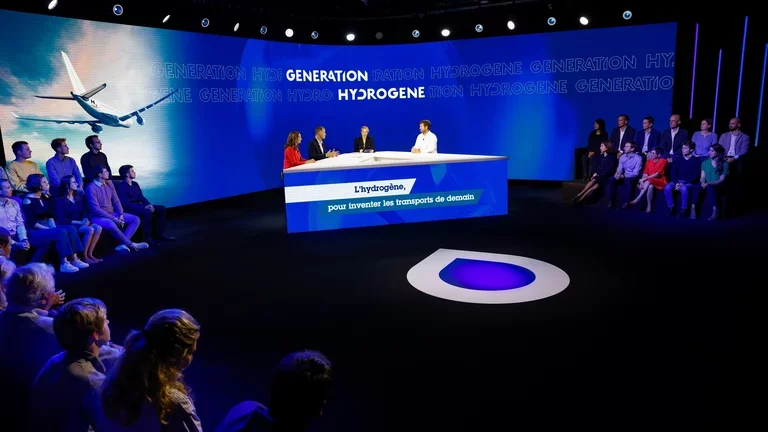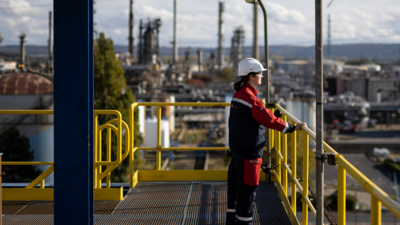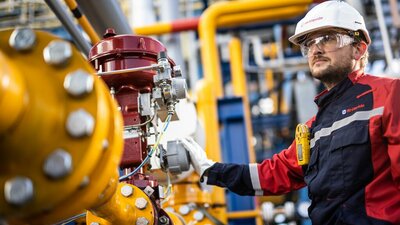Hydrogen: everyone’s talking about it! Génération Hydrogène explains it all
Published on July 03, 2023
3 minutes

The public's growing interest in hydrogen is undeniable, as seen with the success of the second edition of our Génération Hydrogène program, which generated almost a million views in 2022.
How can hydrogen be produced on a large scale? What are its industrial uses? What about in everyday life? To answer these questions, a variety of experts participated in our panel. All of them share the conviction that this molecule has an incredible potential to decarbonize industry and transportation.
François Jackow, Chief Executive Officer of Air Liquide, and Matthieu Giard, member of Air Liquide's Executive Committee in charge of Hydrogen activities, discussed with scientific and economic experts as well as representatives of industrial groups such as Groupe ADP, Toyota and Saint-Gobain the role that hydrogen can play in the energy transition.
Discover the highlights of the second edition of Génération Hydrogène.
Hydrogen becomes geopolitical
Mikaa Mered, a teacher and analyst of hydrogen geopolitics, believes that in the future, countries could be sorted into three main groups. The first group consists of high-potential countries, which will become massive importers of hydrogen due to a lack of resources within their territory. Next come the oil and gas powers - who know they will have to switch to other energy sources. In the third group there are countries that, thanks to hydrogen, will play a key role on tomorrow's global energy scene.
Hydrogen? A solution for tomorrow's mobility
By 2021, 50,000 hydrogen-powered vehicles were already on the road worldwide. By 2050, the Hydrogen Council estimates that hydrogen-powered fuel-cell vehicles could constitute up to 20 percent of the total vehicle fleet worldwide. Franck Marotte, CEO of Toyota France, is firmly committed to this paradigm shift and believes that hydrogen is part of the response to climate change.
To mark the 2022 edition of Nuit Blanche1, Air Liquide and Toyota invited the general public to experience hydrogen mobility!
Glass production: an industry to decarbonize
Almost 40% of the world's CO2 emissions2 come from the construction and use of buildings. Decarbonizing materials and ways of building and renovating is therefore a major challenge. Noémie Chocat, Strategy Director at Saint-Gobain, reflects on the path explored by the company, a world leader in sustainable construction, to decarbonize its glass manufacturing through hybrid electric and hydrogen furnaces.
Génération Hydrogène is the generation of people who want to change things.
François Jackow is convinced that we all have a role to play! Climate change is a major challenge, and it's essential to act collectively. Air Liquide's CEO reminds us that the hydrogen adventure is being played out at all levels: within the company, of course, but also at the state level and every citizen. He urges us to act, and to act fast: "It's now, today, that it's happening," he concludes.
What do they think?
How can we mobilize future talents and support the development of new jobs in the hydrogen sector? Matthieu Giard plays the reverse interview game and answers questions from Nina Petroviciu and Rémi de Girardier, two students from Chimie ParisTech and IESEG.
Air Liquide employees share their vision, their experience at the heart of the Group's innovation projects and their desire to act within the Génération Hydrogène to accelerate the development of low-carbon hydrogen.
"The need to act now", "raising public awareness of the challenges ahead", "an energy that will be omnipresent in our daily lives tomorrow" and more. Interviewed after the show, Air Liquide Shareholders in the audience shared their first impressions:
2. Agence Internationale de l’Energie : https://www.iea.org/reports/buildings


